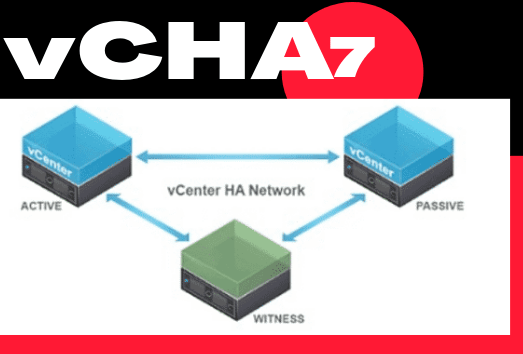vCenter HA eliminates a single point of failure of our vCenter by enabling the vCenter in a cluster mode. The process to deploy vCHA is vCenter 6.5 is slightly different.
The vCenter HA Prerequisites
- At least 3 hosts are required for an ideal vCHA deployment.
- All the 3 VC ( Active – Passive – Witness ) should be kept on different datastores.
- A dedicated network for vCenter HA network – Ideally on a different subnet
- DRS must be enabled.
- HA must be enabled and working.
- Datastore clusters are not supported by vCenter HA deployment, pick a standalone datastore.
- Network latency between nodes should be under 10 ms.
- 3 free static IP’s are required for the vCHA network.

The vCenter HA Configuration
3 VM’s form the vCHA cluster configuration
- Witness Node – Act as a quorum node just to prevent a split-brain scenario
- Active Node – runs the active instance of vCenter Server
- Passive Node – runs the standby or passive instance of vCenter. The purpose of a passive vCenter is to take over the role of an Active vCenter in case our primary vCenter comes in inoperable.
Configuring vCenter HA
Define a new portgroup on vLAN 99 on the distributed switch and name it vCHA -99 this will be our vCHA HA network.

Deploy vCenter HA with the embedded PSC
We can now move ahead with the vCenter HA configuration.
The easiest way to set up vCHA Is via the basic configuration and this the common deployment. You would go with advanced config when you wish to keep the passive node or witness in another datacenter.
I am covering the configuration need for a basic configuration
From vSphere Web UI, Navigate to Configure – vCenter HA

In the vCenter HA section click Set up vCenter HA button to begin the VCHA deployment.
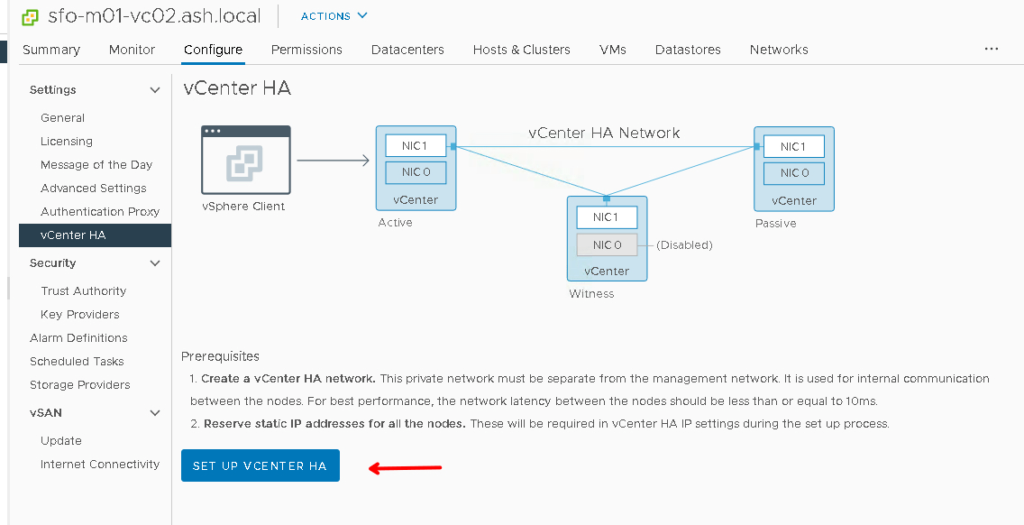
Specify networks used for the management and vCHA then click Next to continue.
vCHA 99 is our vCenter HA network and our primary interface is the management portgroup of our current vCenter.
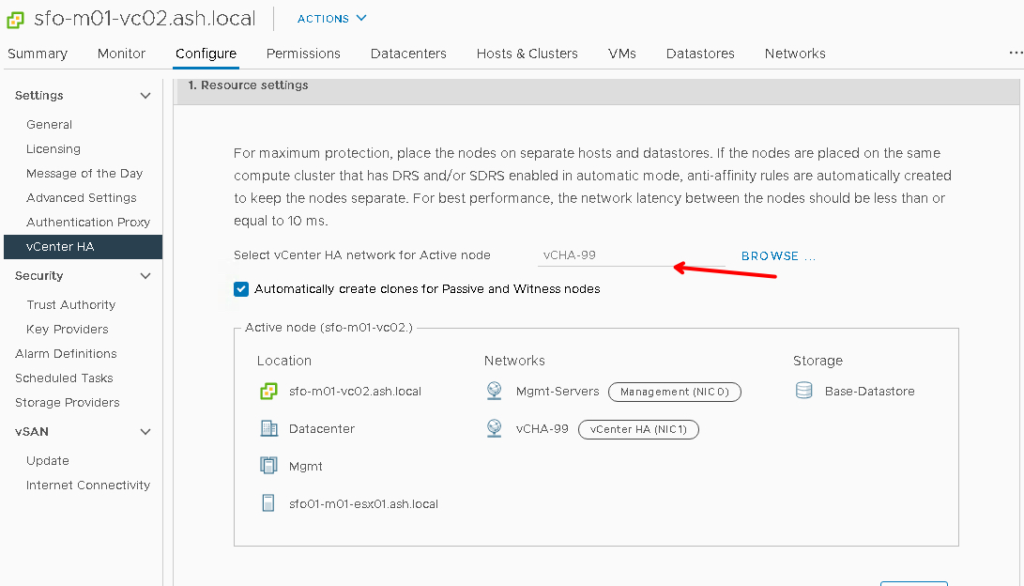
In the deployment configuration window for Passive vCenter we will need to assign the same config we did as above

Enter a name for the virtual machine or leave as default, select the location and click Next.
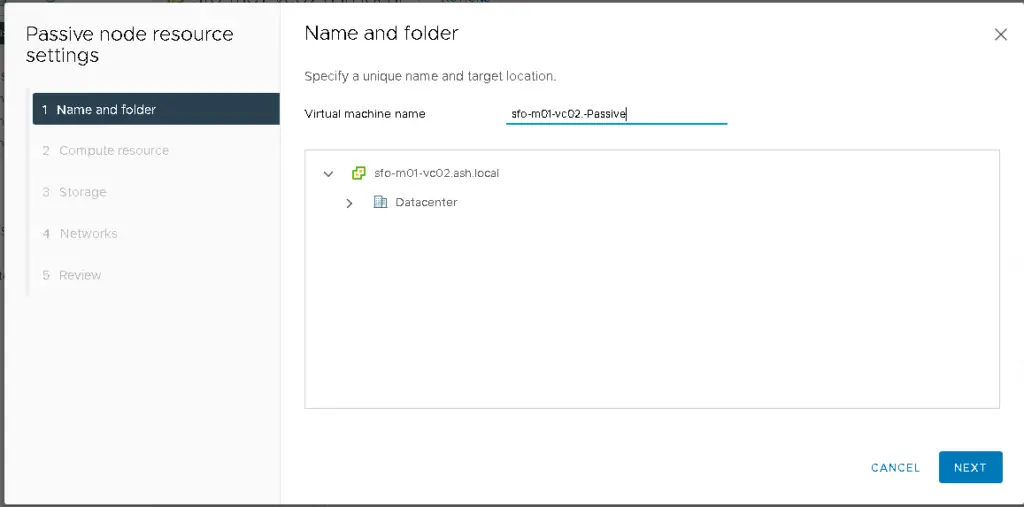
Its recomended we need to have 3 nodes for deployment of vCenter HA but for my lab I’m configuring everything on a single esx host.
Pick the ESXi host and click Next to continue.
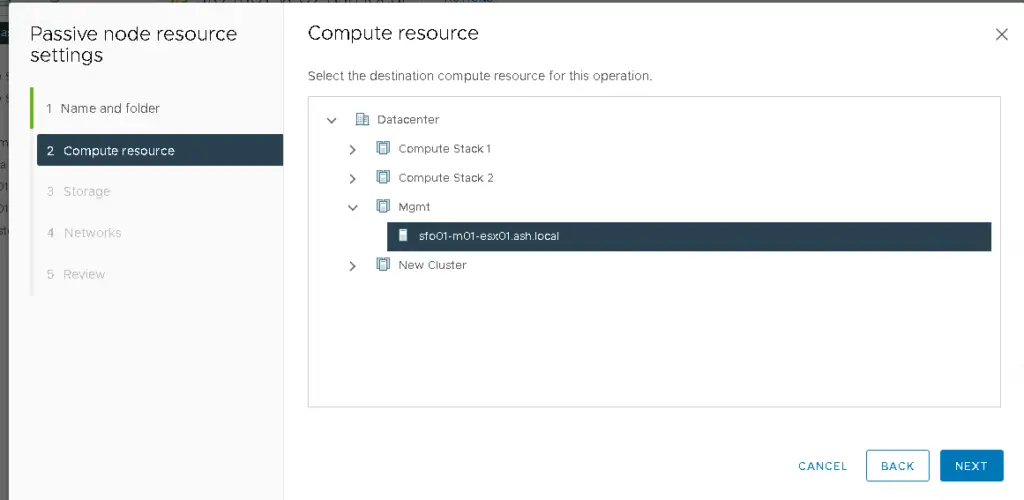
Since Datastore clusters are not supported by vCenter HA deployment, select a standalone storage not member of any cluster and click Next.
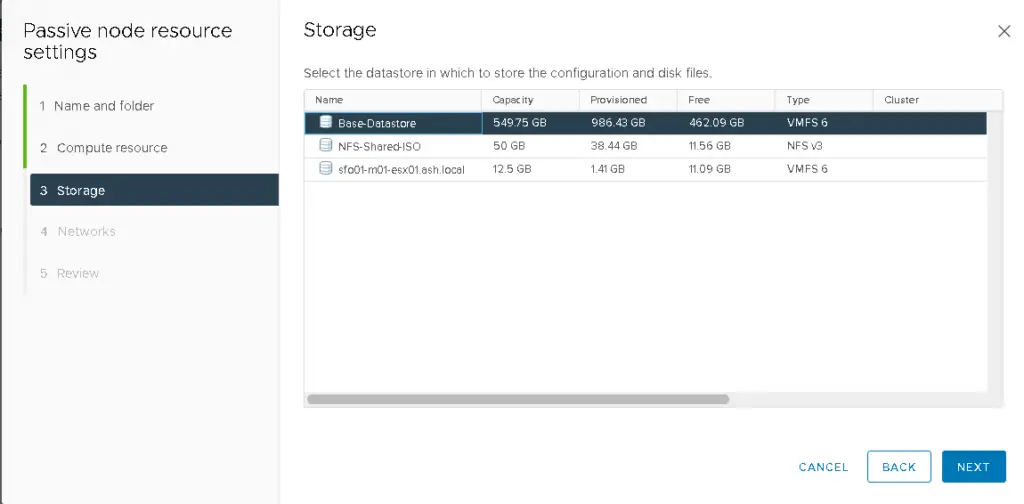
Specify networks used for the management and vCHA then click Next to continue.
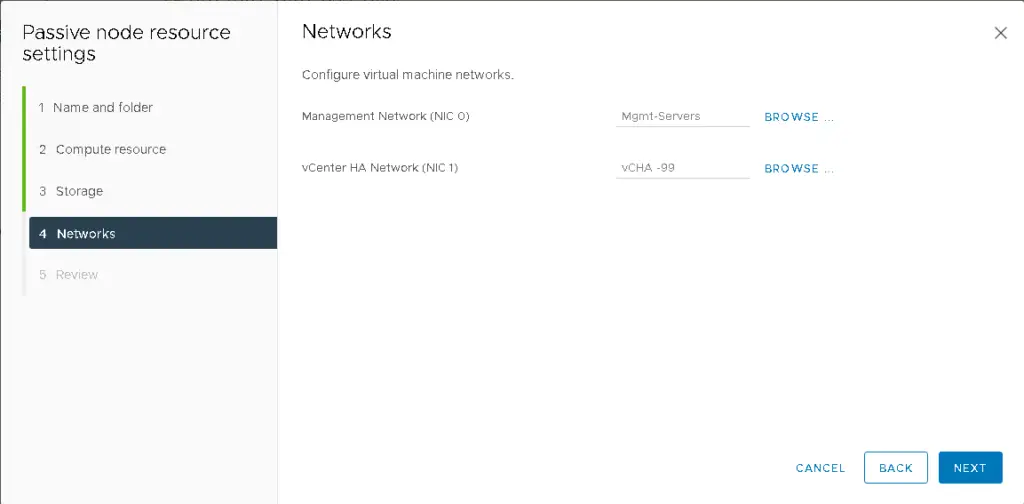
Review the config and click Next to continue.

So the final config of our passive node will look similar to our Active node

On the Witness node section, we just need to pick the vCHA network

Enter a name for the virtual machine or leave as default, select the location and click Next.

Specify networks used for vCHA then click Next to continue.

Review the config and click Next to continue.

Review all settings and click Next to proceed
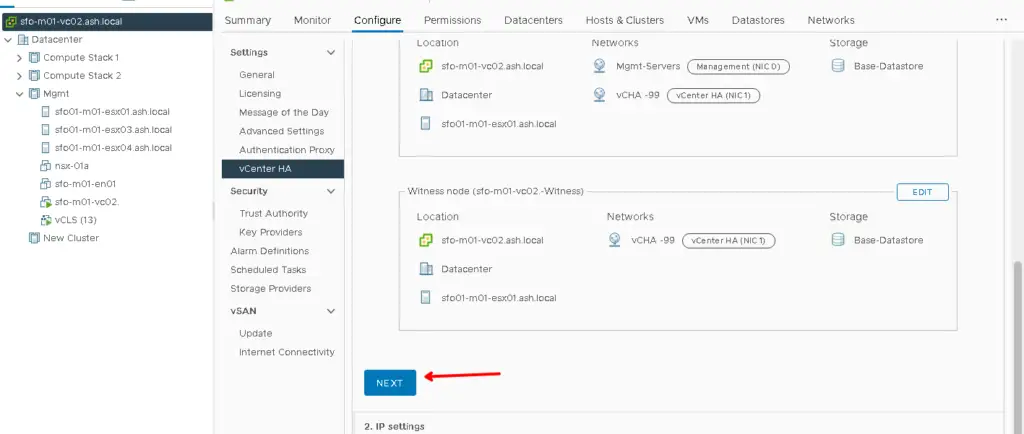
Now we need to assign IP address for our vCHA NIC’s assigned to each of each of the vCenters


When the configuration settings have been verified, click Finish to proceed with the deployment.

The deployment of the Passive and Witness nodes takes around 10 mins to complete and once done, we can see the status on the vCenter HA config pane
Note the IP address assigned to the Passive node is the same IP of the primary vCenter and this Passive vCenter stays ready to failover in case our primary vCenter goes down.
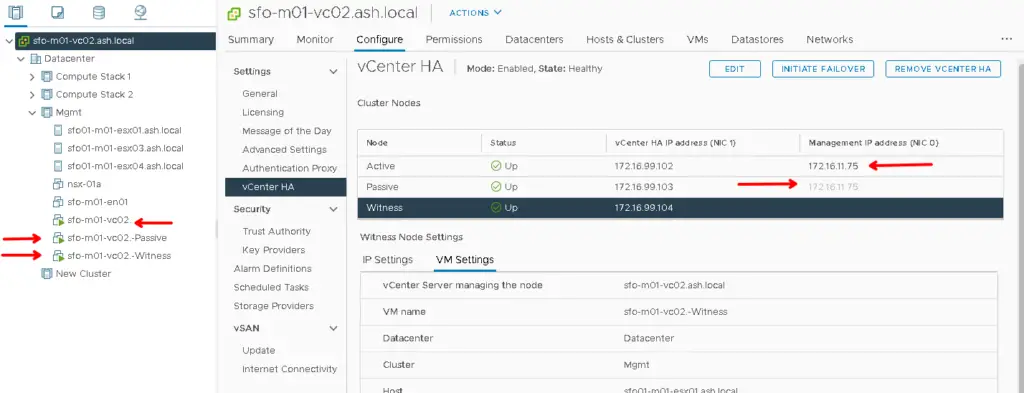
A closer look at the vCenter network config
Primary vCenter has 2 NIC connected – Management and vCHA network

Passive vCenter has 2 NIC connected – Management and vCHA network

Witness vCenter has 2 NIC connected – Management and vCHA network

Summary
In this exercise we have shown you how to enable vCHA on an esx cluster. In the next post, we will attempt to patch the vCenter in HA config

